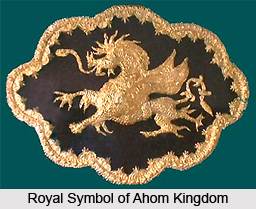 Medieval history of Assam began with the rule of Khen dynasty, belonging to the Kamata kingdom, over the region. A number of other kingdoms also emerged in this region during the medieval era who ruled over different parts. Medieval history of Assam also records a number of conflicts among different kingdoms which represented their hunger for power. This period was also marked by alliances among dynasties, expansion of territories and evolution of distinct styles of art and architecture. Some of the kingdoms expanded their territory greatly whereas many of them were overpowered by the superior ones. The cultural and social life of Assam was also greatly influenced by these kingdoms who contributed in shaping up the multi ethnic facet of Assam.
Medieval history of Assam began with the rule of Khen dynasty, belonging to the Kamata kingdom, over the region. A number of other kingdoms also emerged in this region during the medieval era who ruled over different parts. Medieval history of Assam also records a number of conflicts among different kingdoms which represented their hunger for power. This period was also marked by alliances among dynasties, expansion of territories and evolution of distinct styles of art and architecture. Some of the kingdoms expanded their territory greatly whereas many of them were overpowered by the superior ones. The cultural and social life of Assam was also greatly influenced by these kingdoms who contributed in shaping up the multi ethnic facet of Assam.
Kamata Kingdom
Following the decline of Pala dynasty, Kamata Kingdom emerged in Assam in 13th century which marked the beginning of medieval history of Assam. The khen dynasty of this kingdom was replaced by Alauddin Hussain Shah who was the Turko-Afghan ruler of Gauda. Hussain Shah had implemented strong administration in the kingdom; however he failed to control the kingdom politically. Consequently the kingdom gradually went to the Koch dynasty. The folks of Koch dynasty titled themselves as Kamateshwars. They had such a strong influence and extended their rule to such far extends that they were often called as Koch kingdom.
Kachari Kingdom
Kachari Kingdom was another powerful kingdom that arose in medieval Assam. The rulers of this kingdom were the Dimasa people who belonged to a part of greater Kachari ethnic group. Remnants of this kingdom survived till the advent of British Empire in India. The origin of Kachari Kingdom is shrouded in mystery and some believe that they were the descendents of the son of Bhima, Ghatotkacha. According to the legends, Kacharis also took part in Mahabharata war. Kachari Dimasas had left the Kamarupa kingdom in ancient times owing to political turmoil. While they were crossing the Brahmaputra River, a few of their companions swept away with the flow of the river and later came to be known as Dimasa, sons of the great river Dima.
 Sutiya Kingdom
Sutiya Kingdom
In 1187, Sutiya kingdom was founded by Birpal in the north eastern part of Assam. Sadiya was made the capital of the kingdom. The kingdom comprised of an indigenous ethnic group who used to speak a Tibeto-Burman language but later adopted Assamese language. The most powerful and famed king of the kingdom was Gauri Narayan who was the son of Birpal who brought a number of Sutiya groups to the kingdom. They Sutiyas had formed a marital alliance with the Kamata kingdom by marrying a princess himself. In 1376, Sutiya kingdom entered into a hostile relation with the Ahoms after a Sutiya king killed the Ahom ruler Sutuphaa. This hostility increased till the year 1522 when Ahoms captured their capital Sadiya by executing the then king Nityapal. Sutiyas however continued their raids against the Ahoms. This ceased in the year 1673 when finally the over lordship of Ahoms was accepted by the Sutiyas.
Ahom Kingdom
Ahom kingdom ruled over the Brahmaputra valley of Assam for about 600 years. They had successfully defended the expansion of Mughal territory in north eastern part of India. Ahom dynasty was established by Sukaphaa who was a Tai prince from Mong Mao. The kingdom expanded the most under the rule of Suhungmung in 16th century. Multi ethnicity emerged in the kingdom during this period which had profound impact on social as well as political life of the kingdom. Moamoria rebellion and Burmese invasions in Ahom kingdom played the key roles in weakening the kingdom. After the first Anglo-Burmese war and the treaty of Yandabo in 1826, which led to the defeat of Burmese, the kingdom however passed to the British rule.
Baro-Bhuyan
The landlords and warrior chiefs of the medieval Assam were referred as Baro-Bhuyans who were independent confederacy. They showed great cooperation in times of any aggressions and were known to maintain sovereignty during peace. They used to control a group of villages known as cakala and the people having the highest power referred themselves as raja. The system of Baro-Bhuyan has been derived from the former Kamarupa kingdom. They occupied the regions towards the west of Kachari kingdom and west of Sutiya kingdom. They were successful in defeating the remnants of the administration of Alauddin Husain Shah. Baro-Bhuyans were squeezed between the Kamata kingdom and the Kachari kingdom and their rule was gradually faded away by the expansion of Ahom kingdom. They did not follow any particular religion or ethnicity.



















